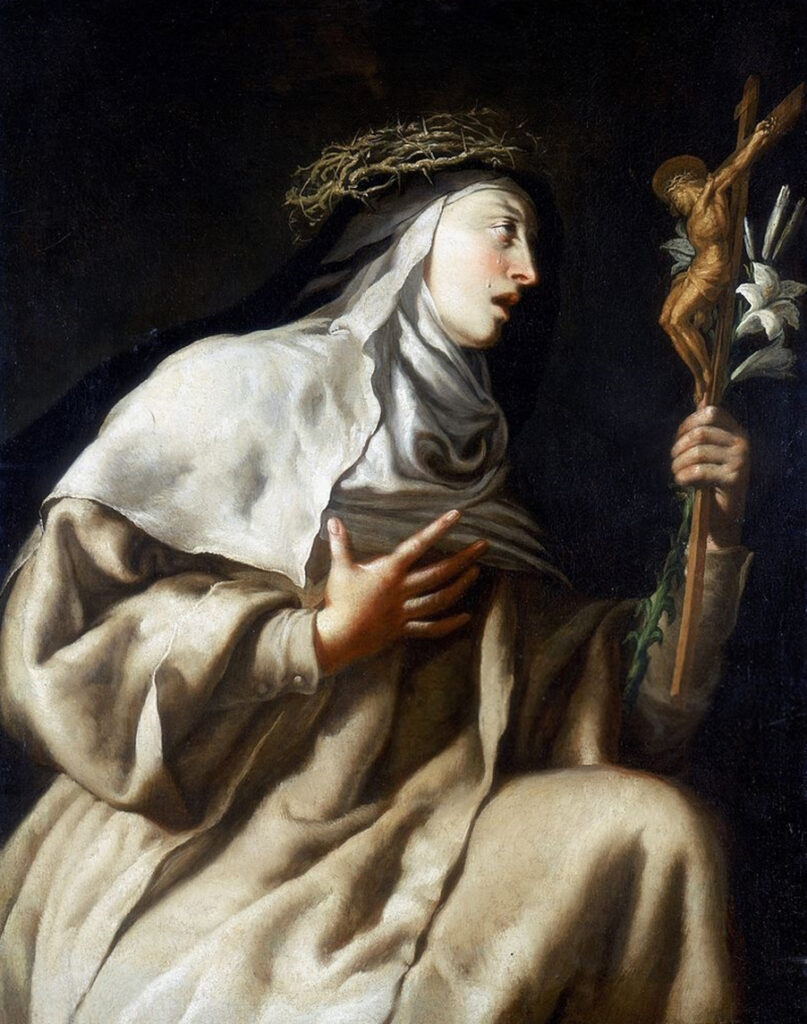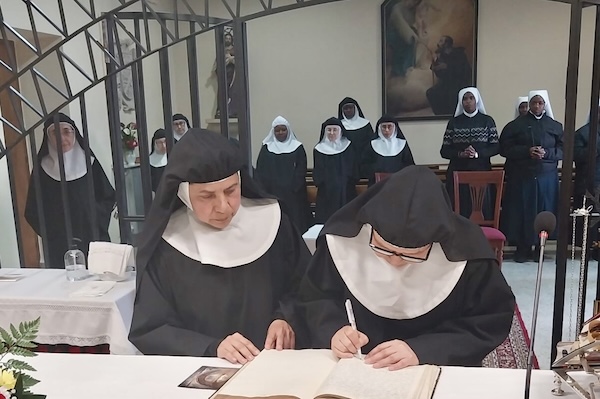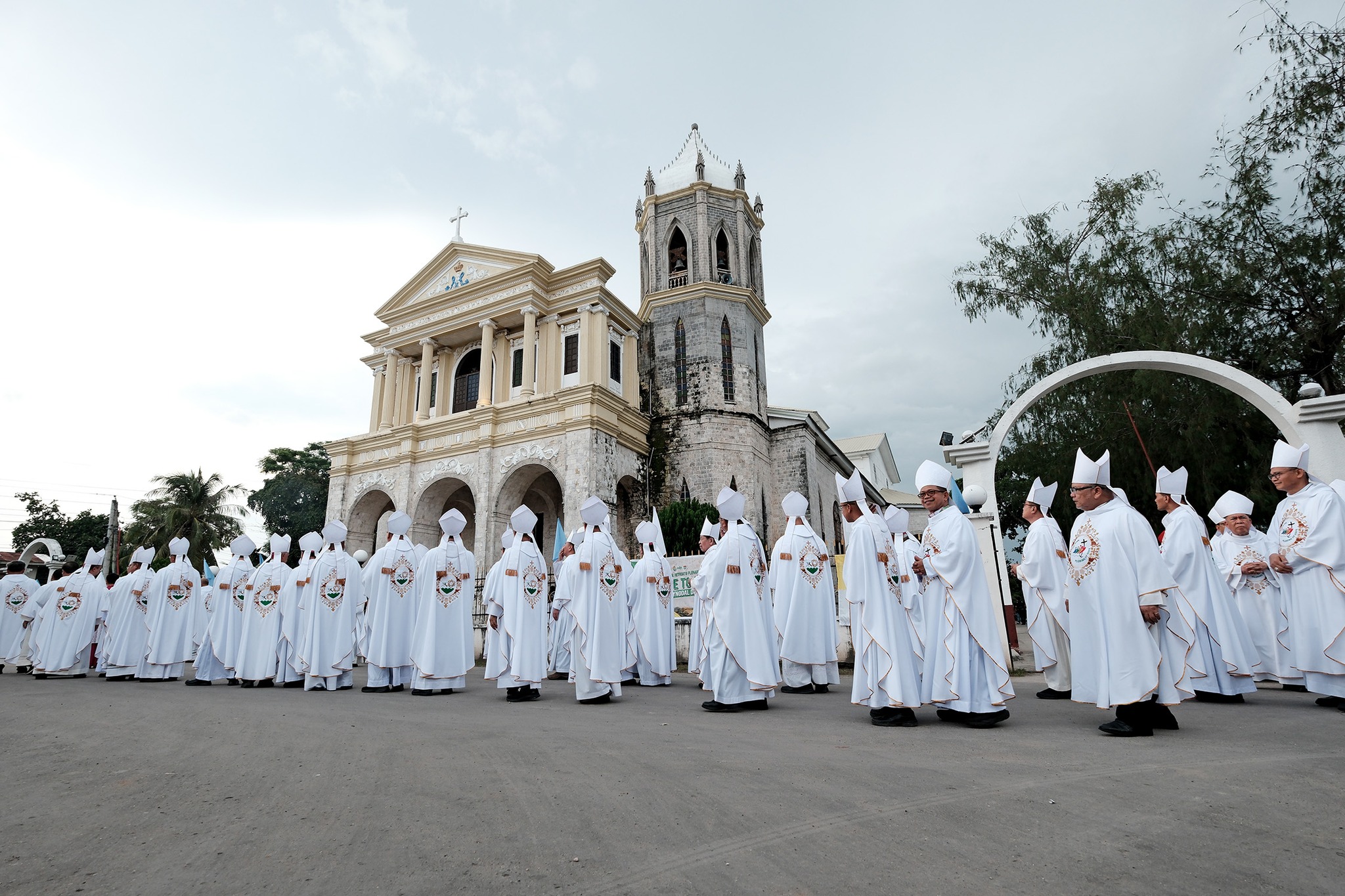Miguel Augusto
This year the Universal Church celebrates St Teresa of Avila on Friday, 15 October, who in religious life took the name of St Teresa of Jesus. Pope Benedict XVI in a general audience, on February 2, 2011, spoke to us of St Teresa of Avila (of Jesus). He described her as a Saint who is “one of the summits of Christian spirituality of all time.”
St Teresa, whose name was Teresa de Cepeda y Ahumada, was born in Avila, Spain in 1515. In her autobiography she mentions some details of her childhood: she was born into a large family, her “father and mother … were devout and feared God.”
The Pope, talking about Teresa’s youth tells us: “While she was still a child and not yet nine years old she had the opportunity to read the lives of several martyrs which inspired in her such a longing for martyrdom that she briefly ran away from home in order to die a martyr’s death and to go to Heaven; ‘I want to see God’, the little girl told her parents.”
A few years later Teresa was to speak of her childhood reading and said that she had discovered in it the way of truth which she sums up in two fundamental principles.
On the one hand was the fact that ‘all things of this world will pass away’ while on the other God alone is ‘forever, forever, forever,’ a topic that recurs in her best known poem: ‘Let nothing disturb you, Let nothing frighten you, All things are passing away: God never changes. Patience obtains all things. Whoever has God lacks nothing; God alone suffices.’ She was about 12 years old when her mother died, and she implored the Virgin Most Holy to be her mother.”
If in her adolescence the reading of profane books had led to the distractions of a worldly life, her experience as a pupil of the Augustinian nuns of Santa María de las Gracias de Avila and her reading of spiritual books, especially the classics of Franciscan spirituality, introduced her to recollection and prayer.
The Pope recalled that her experience as a student of the Augustinian nuns of Santa Maria das Graças in Avila and the reading of spiritual books, especially classics of Franciscan spirituality, taught her meditation and prayer. When she was 20 she entered the Carmelite Monastery of the Incarnation, also in Avila. In her religious life she took the name “Teresa of Jesus.”
In 1543 she lost the closeness of her relatives. Benedict XVI recalls: “her father died and all her siblings, one after another, emigrated to America. In Lent 1554, when she was 39 years old, Teresa reached the climax of her struggle against her own weaknesses. The fortuitous discovery of the statue of ‘a Christ most grievously wounded,’ left a deep mark on her life. The saint, who in that period felt deeply in tune with the St Augustine of the Confessions, thus describes the decisive day of her mystical experience: ‘and… a feeling of the presence of God would come over me unexpectedly, so that I could in no wise doubt either that he was within me, or that I was wholly absorbed in him.’”
The Pontiff emphasized that parallel to her inner development, the saint began in practice to realize her ideal of the reform of the Carmelite Order: in 1562 she founded the first reformed Carmel in Avila, with the support of the city’s Bishop, Don Alvaro de Mendoza, and shortly afterwards also received the approval of John Baptist Rossi, the Order’s Superior General.
Benedict XVI stressed that her meeting with St John of the Cross was fundamental. With him, in 1568, she set up the first convent of Discalced Carmelites in Duruelo, not far from Avila.
The Pope told us about her last trip: “Teresa’s earthly life ended while she was in the middle of her founding activities. She died on the night of 15 October 1582 in Alba de Tormes, after setting up the Carmelite Convent in Burgos, while on her way back to Avila. Her last humble words were: ‘After all I die as a child of the Church,’ and ‘O my Lord and my Spouse, the hour that I have longed for has come. It is time to meet one another.’”
Teresa spent her entire life for the whole Church. She was beatified by Pope Paul V in 1614 and canonized by Gregory XV in 1622. Saint Pope Paul VI proclaimed her a “Doctor of the Church” in 1970.
St Teresa’s most famous mystical work is the Interior Castle, written in 1577, in full maturity. Teresa is inspired by the structure of a castle with seven rooms, as an image of man’s interiority, introducing at the same time the symbol of the silkworm that is reborn as a butterfly, to express the passage from the natural to the supernatural.
“Christian life” for Teresa
The saint emphasizes how essential prayer is. For her, prayer is always a conversation with God (although at times this conversation is beyond mere words). She says: “we go face to face with the One we know loves us.” Teresa counsels us to enter into the presence of God, setting aside distractions. She is teaching us to follow the words of Jesus: “When you pray, go into your room and close the door, and pray to your Father, who is unseen.” (Mt 6:6)
Another theme loved by Teresa of Jesus is the centrality of Christ’s humanity. Indeed, for Teresa, Christian life is a personal relationship with Jesus, which culminates in union with Him through grace, love and imitation. Hence the importance she attaches to meditation on the Passion of Christ and the Eucharist.
St Teresa of Avila, pray for us! (Image: Santa Teresa d’Avila davanti al Crocifisso (1645), Guido Cagnacci, private collection)


 Follow
Follow


